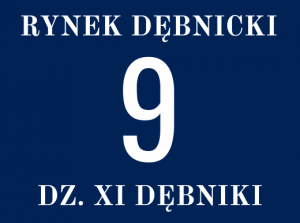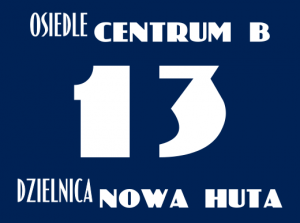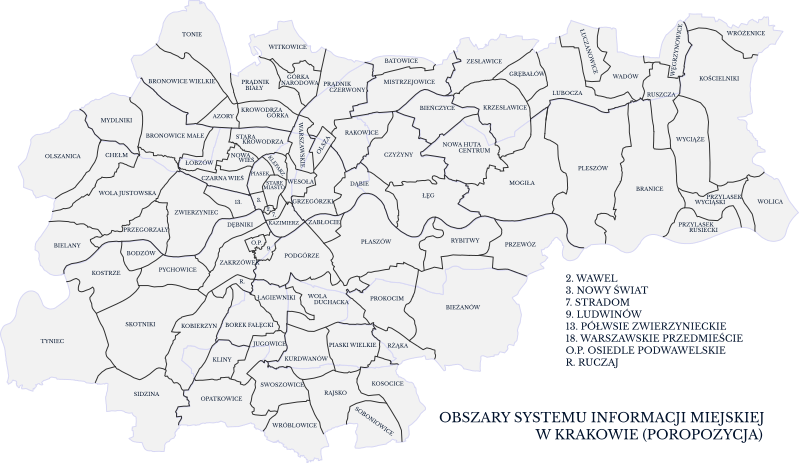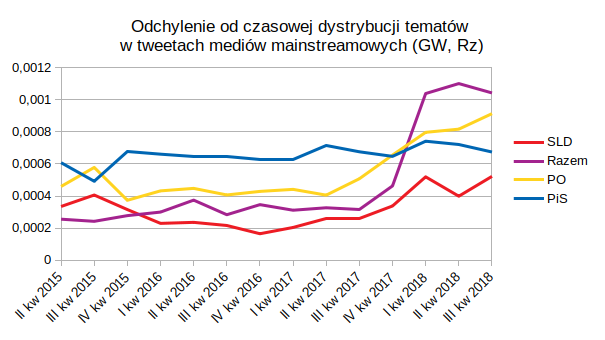Teksty z konwolutu Ms 1095–1105 (Benjamin-Archiv)
Wobec mesjańskiego wyłączenia stawania się można by przywołać definicję „stylu klasycznego” u Focillona: »Brève minute de pleine possession des formes, il se présente … comme un bonheur rapide, comme l’ἄχμη des Grecs: le fléau de la balance n’oscille plus que faiblement. Ce que j’attends, ce n’est pas de la voir bientôt de nouveau pencher, encore moins le moment de la fixité absolue, mais, dans le miracle de cette immobilité hésitante, le tremblement léger, imperceptible, qui m’indique qu’elle vit.« Henri Focillon: Vie des formes, Paris 1934, p. 18. [Ms 1095]
Focillon o l’œuvre d’art: »A l’instant où elle naît, elle est phénomène de rupture. Une expression courante nous le fait vivement sentir: ›faire date‹, ce n’est pas intervenir passivement dans la chronologie, c’est brusquer le moment.« Henri Focillon: Vie des formes, Paris 1934, p. 94. [Ms 1096]
Credo historyzmu według Louis Dimiera (L’évolution contre l’esprit, Paris [1939], p. 46/47) »C’est la curiosité du fait qui pousse à la recherche l’historien; c’est la curiosité du fait qui attire et charme son lecteur … Les témoignages … font qu’on ne peut douter de la chos, c’est leur enchaînement naturel qui en consomme la persuasion … Le résultat est que le fait demeure entier, intact … Tout son art se résume à n’y point toucher, à observer ce que Fustel de Coulanges a si bien nommé ›la chasteté de l’histoire‹.« – Należy zauważyć, że w tle owego credo Dimiera znajdujemy myśl o témoignages Starego i Nowego Testamentu, nie wyłączając świadectw o cudach, których w rozdziale tym broni z dużą dozą pedantyzmu. Jaskrawy pozytywizm owego wyznania wiary jest zatem pozorem. (v. p. 183)
Dimier (p. 76/84) przeciwko pojęciu postępu rodzaju ludzkiego: »Dans la nature physique, l’évolution n’est pas indéfinie; elle a un terme. Le gland devient chêne et rien davantage … L’espèce, loin de survivre à l’individu, commence par mourir avec lui, … ainsi n’étant le sujet d’aucune continuité, elle ne peut être celui d’aucun développement, encore moins d’un développement dont l’individu ne forme aucune idée … Non seulement tout fondement, mais toute apparence manque, en prenant des exemples dans la nature physique, à la chimère d’évolution portée dans l’histoire des esprits … [par] Comte … C’est donc gratis qu’on donne l’évolution pour une loi révélée par l’histoire; elle n’y est même pas ébauchée. Cette lente formation de la morale et de la raison, dont on nous paye, ne ressort d’aucun témoignage … Rien n’est donc si semblable sous de figures diverses, que l’humanité de tous les temps. Le même génie créateur à l’oeuvre, la même impuissance … à n’en recueillir que les bons fruits. On ne peut donc que tomber des nues quand … des professionnels de la pensée ne laissent pas de découvrir dans ce progrès borné … et précaire, un mouvement de la ›raison universelle‹.« [Ms 1097]
Wczucie się w przeszłość służy koniec końców jej uobecnieniu. Tendencja ta nie na próżno doskonale idzie w parze z pozytywistycznym wyobrażeniem historii (jak widać u Eduarda Meyera). Projekcja przeszłości na teraźniejszość jest w dziedzinie historii analogiczna do zastąpienia homologicznych konfiguracji zmianami w świecie fizycznym. Te ostatnie zostają bowiem uznane przez Meyersona za podstawę nauk przyrodniczych (De l’explication dans les sciences, Paris 1921). Homologia konfiguracji jest natomiast kwintesencją właściwie „naukowego” charakteru historii w rozumieniu pozytywistycznym. Zostaje on zaakceptowany przy całkowitym wykorzenieniu tego, co wskazywało na jej pierwotne określenie: pomnienie [Eingedenken]. Fałszywa żywość uobecnienia, wymazanie wszystkich pogłosów „skarg” z historii określają jej ostateczne poddanie nowoczesnemu pojęciu nauki.
Innymi słowy, przedsięwzięcie ustalenia „praw” rządzących przebiegiem wydarzeń w historii nie jest jedynym, ani tym bardziej najsubtelniejszym sposobem, w jaki historiografia naśladuje nauki przyrodnicze. Wyobrażenie, zgodnie z którym zadaniem historyka byłoby „uobecnić” przeszłość, jest winne takiemu oszustwu, a przy tym jest jeszcze mniej przejrzyste [od nomotetyzmu]. [Ms 1098r]
{XVIIa
Marks w wyobrażeniu społeczeństwa bezklasowego zsekularyzował wyobrażenie czasu mesjańskiego. I było to dobre. Nieszczęście wkradło się wówczas, gdy socjaldemokracja wywindowała to wyobrażenie do rangi „ideału”. Ów ideał został zdefiniowany zgodnie z nauką neokantystów jako „nieskończone zadanie” [unendliche Aufgabe]. Zaś nauka ta była szkolną filozofią partii socjaldemokratycznej – począwszy od Schmidta i Stadlera, aż po Natorpa i Vorländera. Gdyby od razu zdefiniować społeczeństwo bezklasowe jako nieskończone zadanie, próżny i jednorodny czas przeobraziłby się był w, jeśli można tak się wyrazić, antyszambr, w którym można było z mniejszą lub większą pewnością czekać nadejścia sytuacji rewolucyjnej. W rzeczywistości nie ma żadnego momentu, który by nie niósł ze sobą własnej szansy rewolucyjnej – musi zostać ona jedynie zdefiniowana jako szansa konkretna, to jest jako szansa na zupełnie nowe rozwiązanie w obliczu zupełnie nowego zadania. Dla rewolucyjnego myśliciela potwierdzenie właściwej szansy rewolucyjnej każdego momentu dziejowego stanowi sytuacja polityczna. Jednak równie podobnym potwierdzeniem potwierdzeniem jest moc samego momentu, rozsadzająca wrota do wcześniej zaryglowanego gmachu przeszłości. Wkroczenie do tego gmachu jest ściśle powiązane z akcją polityczną; jako takie jest ono, choć przynosi również zniszczenie, aktem, który trzeba rozpoznać jako mesjański. (Społeczeństwo bezklasowe nie jest ostatecznym celem postępu historycznego, lecz jego dotąd tyle razy nieudanym, a wreszcie urzeczywistnionym powstrzymaniem.)} [Ms 1098v]
Materialista historyczny, który śledzi strukturę historii, uprawia na swój sposób rodzaj analizy widm. Tak jak fizyk bada ultrafiolet w widmie światła słonecznego, tak ten zapoznaje swoją siłę mesjańską w historii. Kto chce wiedzieć, w jakiej kondycji znajdować się będzie „zbawiona ludzkość”, na jakich warunkach odbędzie się wkroczenie w tę kondycję i kiedy można go oczekiwać, ten stawia pytania, na które nie ma odpowiedzi. Równie dobrze można by się zastanawiać, jakiej barwy są promienie ultrafioletowe. [Ms 1099]
Marks mówi, że rewolucje są lokomotywami historii świata. Jednak może jest zupełnie inaczej. Być może rewolucje są pociągnięciami hamulca awaryjnego w tym pociągu podróżującego rodzaju ludzkiego. [Ms 1100]
W opus Marksa można wskazać trzy podstawowe pojęcia i potraktować całą teoretyczną maszynerię jego dzieł jako próbę zespolenia ze sobą tych trzech pojęć. Idzie o klasową walkę proletariatu, tok rozwoju historycznego rozwoju (postęp) i o społeczeństwo bezklasowe. Struktura podstawowych rozważań Marksa przedstawia się następująco: w wyniku szeregu walk klasowym z biegiem rozwoju historycznego ludzkość osiąga stan społeczeństwa bezklasowego. = Jednak społeczeństwa bezklasowego nie należy wyobrażać sobie jako końcowego punktu rozwoju historycznego. = Z tej błędnej koncepcji wynikło między innymi wyobrażenie wśród epigonów o „sytuacji rewolucyjnej”, która, jak wiadomo, najpewniej nie nadejdzie nigdy[.] = Pojęciu społeczeństwa bezklasowego musi odpowiadać jego prawdziwe mesjańskie oblicze i to w interesie rewolucyjnej polityki samego proletariatu. [Ms 1103]
„Rewolucja jest lokomotywą historii świata” (Podróżni w wagonie)
Wiara w akumulację ilościową opiera się tak na ślepym zaufaniu postępowi, jak i na wierze w „bazę masową”
Historyczno-filozoficzna i polityczna doniosłość pojęcia odwrotu. Dzień pierwszy stanowi teraźniejszość skierowaną na wspak
Metodyczne znaczenie konfrontacji aktualnie rozważanej epoki z prehistorią, tak jak to przedstawiono w tekście o filmie i o Baudelairze. Wskutek tej konfrontacji aktualnie rozważana epoka staje się solidarna z istotną teraźniejszością historiografa. [Ms 1105]
Nowe tezy
Nowe tezy B
{Historia zajmuje się związkami i dowolnie rozpiętymi łańcuchami przyczynowymi. Jednak jako że oferuje ona zasadniczą cytowalność swojego przedmiotu, musi ona w jego ostatecznym ujęciu przedstawiać się jako moment ludzkości. W momencie tym czas musi zostać zawieszony.}
Obraz dialektyczny jest piorunem kulistym, który przebiega przez cały horyzont przeszłości.
{Artykułować przeszłość historycznie oznacza: rozpoznawać w przeszłości to, co schodzi się ze sobą w konstelacji danego pojedynczego momentu. Poznanie historyczne jest możliwe tylko i wyłącznie w momencie historycznym. Poznanie w momencie historycznym jest jednak poznaniem momentu. Jako że przeszłość zostaje ściągnięta do momentu – do obrazu dialektycznego – zapisuje się ona w niezamierzonych wspomnieniach ludzkości.}
Wyobrażenie historii powszechnej jest związane z wyobrażeniem postępu i kultury. By wszystkie momenty w historii ludzkości mogły zostać nanizane na łańcuch postępu, muszą one zostać sprowadzone do wspólnego mianownika kultury, oświecenia[,] ducha obiektywnego czy jakkolwiek inaczej by go nie nazywać. [Ms 491]
Nowe tezy C
Tylko gdy bieg historii wiedzie historyka jak nić w ręku może być mowa o postępie. Jeżeli jednak jest on wielorako postrzępiony i przypomina warkocz rozplątany na tysiące kędziorów, jeżeli opada jak rozpuszczone włosy, nie ma on wtedy żadnego określonego położenia, dopóki całość nie zostanie zebrana i zapleciona w warkocz.
Podstawową ideą mitu jest świat jako kara – kara, która zostaje wynaleziona dopiero dla ukaranych. Wieczny powrót jest projekcją odsiadki w kozie na wymiar kosmiczny: ludzkość musi przepisać swój tekst nieskończoną ilość razy ([Paul] Eluard: Répétitions [1922])
{Wieczność ognia piekielnego stępiła chyba najstraszliwsze ostrze starożytnej idei wiecznego powrotu. Stawia wieczność mąk na miejsce wieczności powtórzenia.}
{Przywołując na nowo myśl o wiecznym powrocie w XIX wieku, Nietzsche uczynił jego figurą tego, na kim wypełniało się mityczne fatum. Esencją mitycznych dziejów jest bowiem powrót. (Syzyf, Danaidy)} [Ms 489]
Nowe tezy H
Rozpuszczenie w historii pragmatycznej nie powinno się odbyć na korzyść historii kultury. Zresztą pragmatyczne ujęcie historii ponosi porażkę nie z niejasnymi żądaniami, podnoszonymi przez „naukę ścisłą” w imię prawa przyczynowości. Ponosi porażkę z przesunięciem perspektywy historycznej. Czas, który już nie jest w stanie objaśniać jej pozycji władzy, traci związek z objaśnieniem, które służyło dawnym pozycjom władzy.
{Podmiot historiograficzny słusznie należy do tej części ludzkości, której solidarność obejmuje wszystkich uciśnionych. Jest to ta część, która może podjąć największe ryzyko teoretyczne, ponieważ w praktyce ma najmniej do stracenia.}
{Nie każda historia powszechna musi być reakcyjna. Historia powszechna bez zasady konstrukcyjnej jednak reakcyjną być musi. Zasada konstrukcyjna historii umożliwia własną reprezentację w poszczególności. Innymi słowy: jest monadologiczna. Istnieje ona w historii zbawienia.}
{Idea prozy pokrywa się z mesjańską ideą historii powszechnej. (Leskow!)} [Ms 484]
Nowe tezy K
Organizować pesymizm znaczy bowiem … w polu działania politycznego odkrywać … pole obrazów. To pole obrazów nie daje się jednak zmierzyć na sposób kontemplacyjny. … Długo poszukiwane pole obrazów…, świat wszechstronnej i integralnej aktualności. (surrealizm [v. eseje Benjamina, Bd. 2])
Zbawienie jest granicą [limes] postępu.
{Świat mesjański to świat wszechstronnej i integralnej aktualności. To w nim wpierw się przejawia historia powszechna. Lecz nie jako napisana, a uroczyście przebyta. Uroczystość ta oczyszczona jest z wszelkiej świąteczności. Nie zna żadnych uroczystych pieśni. Jej językiem jest uwolniona proza, która rozsadziła kajdany pisma. (Idea prozy pokrywa się z mesjańską ideą historii uniwersalnej. Por. „narrator” [v. esej Benjamina, Bd. 2]: rodzaje prozy artystycznej jako spektrum historyczności.)}
{Wielość „historii” jest mocno powiązana, jeśli nie identyczna, z wielością języków. Historia uniwersalna w obecnym rozumieniu jest jedynie rodzajem esperanto. (Daje wyraz nadziei ludzkości równie dobrze, jak nazwa jej uniwersalnego języka).} [Ms 490]
Teksty zatytułowane
Słowo wstępne
W pomnieniu [Eingedenken] zdobywamy doświadczenie, które zabrania nam pojmować historię zasadniczo ateologicznie; o tyleż nie powinniśmy próbować jej pisać przy użyciu pojęć teologicznych. (N 8, 1 [sigil rękopisu Pasaży, v. Bd. 5]).
Stosunek mojego myślenia do teologii jest jak bibułki do tuszu. Jest ono nią całkiem przesiąknięte. Gdyby jednak szło o bibułkę, nie pozostałoby nic z tego, co było napisane. (N 7 a, 7 [v. Bd. 5])
{Istnieje pojęcie teraźniejszości, w myśl którego stanowi ona (intencjonalny) przedmiot proroctwa. Pojęcie to jest (komplementarnym) korelatem [koncepcji] historii, która błyskawicznie ukazuje się w zjawiskach. Jest ono z gruntu polityczne i tak też definiuje je Turgot. To stanowi ezoteryczny sens słów[:] historyk jest prorokiem obróconym wstecz. Obraca się on plecami do własnych czasów; jego proroczy wzrok rozpala się na skazanych na przeszłość wierzchołkach dawnych zdarzeń. W owym proroczym spojrzeniu własny czas jest znacznie bardziej teraźniejszy aniżeli dla jego współczesnych, którzy mu „dotrzymują” kroku.} [Ms 472]
Kwestia metodologiczna III
Wraz z błyskawicznym tempem techniki, któremu towarzyszy równie błyskawiczny rozpad tradycji, rola kolektywnej nieświadomości, archaiczna twarz epoki wychodzi na jaw dużo szybciej niż niegdyś, w zasadzie już dla bezpośrednich następców. Stąd surrealistyczne spojrzenie na historię.
{Forma nowych środków produkcji, która z początku zdominowana jest przez to, co stare (Marks), odpowiada w nadbudowie świadomości snu, gdzie to, co nowe, zawiązuje się w kształcie fantastycznym. Michelet: »Chaque époque rêve la suivante.« Bez owej fantastycznej praformy w świadomości snu, nie powstaje nic nowego. Jej przejawy znajdują się jednak nie tylko w sztuce. Jest decydujące dla XIX wieku, że fantazje zewsząd wykraczają poza jej granice.} [Ms 467]
{Problem tradycji I}
Dialektyka w bezruchu
(Podstawowa aporia: „Tradycja jako nieciągłość przeszłego w przeciwieństwie do historii jako ciągłości wydarzeń”. – „Być może ciągłość tradycji jest pozorna. Lecz wówczas właśnie trwałość tego pozoru stwarza jej ciągłość”.)
(Podstawowa aporia: „Historia uciskanych jest nieciągłością”. – „Zadaniem historii jest uchwycić tradycję uciskanych”.)
Dalej w związku z owymi aporiami: „Ciągłość historii należy do uciskających. Podczas gdy przedstawienie ciągłości zrównuje wszystko z powierzchnią ziemi, przedstawienie nieciągłości jest podstawą prawdziwej tradycji”. – – {Świadomość historycznej nieciągłości jest własnością klas rewolucyjnych w momencie ich działania. Z drugiej jednak strony, istnieje ścisły związek między czynem rewolucyjnym klasy i pojęciem, które klasa ta ma (nie tylko o nadchodzącej, ale i) o przeszłej historii. Jest to tylko pozorna sprzeczność: rewolucja francuska odwoływała się ponad dwutysiącletnią otchłanią do rzeczypospolitej rzymskiej.} [Ms 469]
Problem tradycji II
W przypadku proletariatu świadomości nowego zadania nie odpowiadała żadna historyczna korespondencja. Nie miało miejsce żadne wspomnienie. (Próbowano je stwarzać sztucznie w dziełach takich jak m. in. Historia wojny chłopskiej Zimmermanna. Bez powodzenia.)
{To w tradycji uciśnionych występuje klasa robotnicza jako ostatnia zniewolona, jako klasa mścicielska i wyzwolicielska. Z tej [sic] świadomości od początku zrezygnowała socjaldemokracja. Podsunęła ona robotnikom rolę wybawicieli przyszłych pokoleń. Tym samym przecięła ścięgna ich ruchu. W szkole tej klasa zapomniała tyleż o nienawiści, co o skłonności do poświęceń. Gdyż jedna i druga karmią się bardziej prawdziwym obrazem uciemiężonych przodków niż wyidealizowanym obrazem wyzwolonych potomków. Na początku rewolucji rosyjskiej świadomość tego była żywa. Zdanie „żadnej chwały dla zwycięzców, żadnej litości dla zwyciężonych” jest tak wstrząsające, gdyż daje ono wyraz bardziej solidarności z poległymi braćmi niż z urodzonymi potem. – „Kocham ród przyszłych stuleci” [Ich liebe das Geschlecht der kommenden Jahrhunderte] pisał młody Hölderlin. Ale czy nie jest to jednocześnie przyznanie do wrodzonej słabości niemieckiego mieszczaństwa?} [Ms 466r]
Teraz rozpoznawalności
Powiedzenie, w myśl którego historyk jest prorokiem odwróconym wstecz, może być rozumiane dwojako. Tradycjonaliści wierzą, że, zwracając się ku odległej przeszłości, historyk wieszczy o tym, co ówczesnym jawiło się jako przyszłość, lecz potem stało się właśnie przeszłością. Pogląd ten odpowiada najściślej historycznym teoriom wczucia, które Fustel de Couloges obrócił w radę: Si vous voulez revivre une époque, oubliez que vous savez ce qui s’est passé après elle. – Powiedzenie to może być jednak wyjaśnione i rozumiane inaczej: historyk odwraca się plecami do własnych czasów, a jego prorocze spojrzenie rozbłyska na coraz głębiej w przeszłości zanurzonych wierzchołkach dawnych pokoleń. W owym wieszczym spojrzeniu czasy współczesne są znacznie współcześniejsze niż współcześni mu ludzie, „dotrzymujący im kroku”. Nie na darmo Turgot scharakteryzował pojęcie współczesności, stanowiącej intencjonalny przedmiot proroctwa, jako istotne i z gruntu polityczne. „Zanim będziemy mogli zasięgnąć informacji o danym stanie rzeczy, pisze Turgot, zmieni się on wielokroć. Toteż o tym, co miało miejsce, zawsze dowiadujemy się za późno. Stąd też o polityce można rzec, że jej zadaniem jest niejako przewidywanie teraźniejszości”. Dokładnie to pojęcie teraźniejszości stoi u podstaw prawdziwej historiografii. (N 8 a, 3 N 12 a, I [sigile rękopisu Pasaży, v. Bd. 5]) Kto przetrząsa przeszłość jak lamus w poszukiwaniu przykładów i analogii, temu nie ma żadnego pojęcia o tym, ile zależy od jej uobecnienia w danym momencie. [Ms 471]
Obraz dialektyczny
Jeśli traktować historię jako tekst, wynika z niej to, co twierdzą nowsi autorzy literaccy: przeszłość pozostawiła w niej obrazy, które można przyrównać do utrwalonych na światłoczułej kliszy. „Tylko przyszłość dysponuje wywoływaczem, który byłby na tyle silny, by ujawnić obraz ze wszystkimi szczegółami. Niektóre stronice u Marivaux czy u Rousseau zawierają tajemny sens, którego współcześni im czytelnicy nie mogli w pełni odcyfrować.” (Monglond N 15 a, I [sigil rękopisu Pasaży, v. Bd. 5]) Metoda historyczna jest metodą filologiczną, u której podstaw leży księga życia. „Czytać to, co nigdy nie zostało zapisane” – jest napisane u Hofmansthala. Czytelnik, o którym tu mowa, jest prawdziwym historykiem.)
{Wielość „historii” jest podobna wielości języków. Historia powszechna w obecnym rozumieniu jest jedynie rodzajem esperanto. Idea historii powszechnej jest ideą mesjańską.}
{Świat mesjański to świat wszechstronnej i integralnej aktualności. To w nim wpierw się przejawia historia powszechna. Lecz nie jako napisana, a uroczyście przebyta. Uroczystość ta oczyszczona jest z wszelkiej świąteczności. Nie zna żadnych uroczystych pieśni. Jej językiem jest integralna proza, która rozsadziła kajdany pisma i stała się zrozumiała dla wszystkich ludzi (jak język ptaków u niedzielnych dzieci). – Idea prozy pokrywa się z mesjańską ideą historii powszechnej (rodzaje prozy artystycznej jako spektrum tego, co powszechno-historyczne – w „Narratorze” [v. esej Benjamina, Bd. 2])} [Ms 470]
Krytyki
Krytyka postępu – o alegorii –
Krytyka historii kultury i historii literatury
Krytyka historii powszechnej
Krytyka wczucia – krytyka historyczna – cytat – posądzenie – wprowadzenie
Krytyka uznania
Krytyka kompartmentacji historii
Krytyka teorii nieskończonego postępu
Krytyka teorii automatycznego postępu
Krytyka teorii możliwego postępu we wszystkich dziedzinach. Brak postępu w sztuce w jej elemencie profetycznym. Różnica między postępami ogłady – ale gdzie jest wspólny mianownik? – i postępami moralnymi, dla których narzuca się miara czystej woli, intelligiblnego charakteru
Krytyka teorii postępu u Marksa. Postęp definiowany tam przez rozwój sił wytwórczych. Lecz do nich należy człowiek, wzg. proletariat. Wobec tego kwestia kryteriów zostaje tylko odsunięta. [Ms 475]
Teksty bez tytułów. Znaczenie sigilów niejasne. Przedruk zgodnie z porządkiem zastanym w archiwum
B14
Świat mesjański jest światem wszechstronnej i integralnej aktualności. Dopiero w nim istnieje historia powszechna. Co dziś określane jest tym mianem, może być tylko rodzajem esperanto. Historia powszechna nie może istnieć, dopóki pomieszanie pochodzące z czasów budowy wieży Babel nie zostanie zażegnane. Wymaga ona języka, na który można przełożyć każdy tekst żywych i umarłych. Czy lepiej, jest ona tym właśnie językiem. Nie tyle jednak zapisanym, co świątecznie obchodzonym. Święto to to oczyszczone jest z wszelkiej uroczystości i nie zna uroczystych śpiewów. Jego językiem jest sama idea prozy, zrozumiała dla wszystkich ludzi jak mowa ptaków dla niedzielnych dzieci. [Ms 441]
A
Wieczna lampka jest obrazem prawdziwego istnienia historycznego. Jest ona obrazem zbawionej ludzkości – płomień rozpalony w dniach najpierwszych, znajdujący pożywienie we wszystkim, co wówczas otaczało ludzi. [Ms 445]
{Wielka rewolucja cytowała starożytny Rzym}
{Związek tępej wiary w postęp i zaufania w masowość: ilościowa akumulacja musi dać radę}
{„Rewolucja jest lokomotywą historii”, podróżni w wagonie}
{Destruktywne momenty: demontaż historii powszechnej, wyłączenie elementu epickiego, brak wczucia w zwycięzcę. Historię trzeba czesać pod włos. Historia kultury jako taka odpada: musi ona zostać zintegrowana w historię walk klasowych}
{Przykład prawdziwego przedstawienia historycznego: „Do potomnych” [v. wiersz Brechta]. Żądamy od potomnych nie podziękowania za nasze zwycięstwa, lecz pomnienia [Eingedenken] naszych klęsk.} Jest to pociecha: może to być pociecha dla tych jedynie, którzy nie mają już nadziei na pociechę
{„Lecz mróz i mrok bezkresny […] oczyści
Łez padół, gdzie cierpimy ty i ja!” [v. ostatnie wersy Opery za trzy grosze Brechta] (O wczuciu w zwycięzcę)}
{Moda jako cytat dawnych strojów} (do uwzględnienia również w interpretacji fragmentu Blanquiego o krynolinie) [Ms 446]
Wyobrażenie historii, która wyzwoliła się spod schematu następstwa w próżnym i jednorodnym czasie, poprowadziłoby wreszcie na pole bitwy niszczycielskie siły materializmu historycznego, które tak długo pozostawały ułagodzone. W ten sposób zachwiano by trzema najważniejszymi pozycjami historyzmu. Pierwszy cios musi być wymierzony w ideę historii powszechnej. Przeświadczenie, jakoby historia ludzkości składała się z dziejów narodów, jest dziś – ponieważ istota narodów jest równie zaciemniona przez ich obecną strukturę, jak przez ich obecne stosunki – wytrychem czystego lenistwa umysłowego. (Idea historii powszechnej powstaje i upada wraz z ideą języka uniwersalnego. Jak długo ten ostatni posiada fudamenty, bądź to teologiczne jak średniowieczu, bądź logiczne jak u Leibniza, historia powszechna nie była myślową niemożliwością. Jednakże historia powszechna taka, jaką była uprawiana w ubiegłym wieku, może stanowić wciąż jedynie rodzaj esperanto.) – Druga umocniona pozycja historyzmu daje się dostrzec w przeświadczeniu, jakoby historia była czymś, co można opowiedzieć. W badaniach materialistycznych moment epicki, nie do pominięcia w procesie konstrukcji, został rozsadzony. Likwidację elementu epickiego należy zaakceptować tak, jak uczynił to Marks jako autor w Kapitale. Rozpoznał, że historia kapitału daje się napisać tylko w stalowym zbrojeniu teorii. W teoretycznym obrazie pracy pod panowaniem kapitału, który Marks przedstawia w swoim dziele, interesy ludzkości ludzkości są lepiej podniesione niż w monumentalnych i drobiazgowych, z gruntu spokojnych dziełach historyzmu. Ciężej jest czcić pamięć bezimiennych niż sławnych [kolejna strona:]
{uznanych, nie wyłączając pisarzy i myślicieli. Pamięci bezimiennych poświęconych jest konstrukcja historii. – Trzeci bastion historyzmu jest najmocniejszy i najcięższy do zdobycia. Jest nim „wczucie w zwycięzcę”. Za każdym razem rządzący są dziedzicami wszystkich tych, którzy w toku historii odnosili zwycięstwa. Wczucie w zwycięzcę wychodzi na dobre za każdym razem rządzącym. Materialista historyczny respektuje ów stan rzeczy. Zdaje też sobie z tego sprawę, że taki stan rzeczy jest dobrze uzasadniony. Kto zawsze, aż do dzisiejszego dnia, zwyciężał tysiące walk, przez które przetoczyła się historia, ten ma swój udział w triumfach dzisiejszych rządzących nad dzisiejszymi rządzonymi. Inwentarza łupów, które ci pierwsi wystawiają przed tymi ostatnimi na pokaz, materialista historyczny nie może zlustrować inaczej jak bardzo krytycznie. Inwentarz ten nazywa się kulturą. To, co materialista historyczny widzi w dobrach kultury, nieodłączne jest od ich pochodzenia, na które nie może spoglądać bez zgrozy. Swoje istnienie zawdzięczają nie [tylko] wysiłkowi wielkich geniuszów, którzy je stworzyli[,] ale także pozbawionej imion pańszczyźnie ich współczesnych. Nie ma dokumentu kultury, który nie byłby równocześnie dokumentem barbarzyństwa. Materialista historyczny zachowuje od nich dystans. Musi on czesać historię pod włos – i powinien on brać ją z pomocą kowalskich kleszczy.} [Ms 447, Ms 4094]
{Siła nienawiści u Marksa. Wola walki klasy robotniczej. Rewolucyjne zniszczenie skrzyżowane ze zbawczą myślą. (Nieczajew. Biesy)}
{Istnieje ścisły związek między historycznym czynem klasy i pojęciem, jakie klasa ta ma nie tylko o nadchodzących, ale i przeszłych dziejach. Jest tylko pozorną sprzecznością stwierdzenie, że świadomość historycznej nieciągłości jest własnością klas rewolucyjnych w momencie ich czynu. Historycznych odpowiedników bowiem nie brakuje: Rzym dla rewolucji francuskiej. Dla proletariatu wspomniany związek jest naruszony: świadomość nowego zadania nie ma historycznych odpowiedników[,] nie ma miejsce żadne wspomnienie. Na początku próbowano je stworzyć (por. Historia wojny chłopskiej Zimmermanna). Podczas gdy przedstawienie ciągłości zrównuje wszystko z powierzchnią ziemi, przedstawienie nieciągłości jest podstawą prawdziwej tradycji. Należy ukazać związek poczucia nowego początku z tradycją.} [Ms 449]
{Destruktywny bądź krytyczny element w historiografii ujawnia się w rozsadzeniu historycznej ciągłości. Prawdziwa historiografia nie wybiera swego przedmiotu lekką ręką. Nie ujmuje go, [lecz] wysadza go z toku dziejów. Destruktywny element w historiografii należy rozumieć jako reakcję na konstelację niebezpieczeństw, która zagraża zarówno przekazanemu, jak i odbiorcy przekazu. Owa konstelacja niebezpieczeństw wychodzi naprzeciw historiografii; wobec niej musi ona zachować swoją duchową teraźniejszość. W owej konstelacji niebezpieczeństw rozbłyska obraz dialektyczny. Jest on tożsamy z przedmiotem historycznym; usprawiedliwia on rozsadzenie ciągłości. (N 10, 1–2–3 [sigile rękopisu Pasaży; v. Bd. 5])}
Tak silny jak destruktywny impuls, tak silny jest w prawdziwej historiografii impuls ratunku. Przed czym jednak można ratować coś minionego? Nie przed złą sławą i pogardą, w którą popadło i nie przed określonym rodzajem przekazu. Jego rodzaj, w którym czci się coś jako „dziedzictwo”, jest zgubniejszy niż możliwe zapomnienie. (N 9, 3 [v. Bd. 5])
Popularnemu przedstawieniu historii zależy na wytwarzaniu ciągłości. Stawia ono akcent na te elementy, które już odczuły jego działanie. Umykają mu miejsca, gdzie przekaz jest przerwany, a przez to jego rysy i szwy, które oferują postój temu, kto chciałby się przez nie wydostać. (N 9 a, 5 [v. Bd. 5]) [Ms 473]
Nie jest tak, że to, co przeszłe, rzuca światło na teraźniejsze lub to, co teraźniejsze, na przeszłe; obraz jest natomiast tym, gdzie przeszłość spotyka się z teraźniejszością w konstelacji. Podczas gdy związek niegdyś z teraz jest (niezmiennie) czysto czasowy, ten między przeszłością i teraźniejszością jest dialektyczny, skokowy. (N 2 a, 3 [v. Bd. 5])
{Rozbłyskujący w teraźniejszości obraz przeszłości jest, zgodnie ze swym dalszym określeniem, obrazem pamięci. Przypomina on obrazy z własnej przeszłości, które ludziom stają przed oczyma w momentach niebezpieczeństw. Obrazy te zjawiają się, jak wiadomo, niezamierzenie. Historia sensu stricto jest zatem obrazem niezamierzonego pomnienia [Eingedenken][,] obrazem, który w momencie niebezpieczeństwa nagle pojawia się u podmiotu historii. Kompetencja historyka zależy od jego wyostrzonej świadomości kryzysu, w którym znalazł się w danym momencie podmiot historii. Podmiot ten nie jest bynajmniej podmiotem transcendentalnym, lecz walczącą klasą uciskaną w najbardziej widocznej sytuacji swoich dziejów. Historyczne rozpoznanie istnieje wyłącznie dla niej i dla niej wyłącznie w momencie historycznym. Ustalenie to pociąga za sobą likwidację epickiego momentu reprezentacji historycznej. Niezamierzona pamięć nie posiada nigdy – co odróżnia ją od zamierzonej – przebiegu, lecz jedynie obraz. (Stąd «nieporządek» jako przestrzeń obrazów niezamierzonego pomnienia [Eingedenken].)} [Ms 474]
Kuriozum i curiosité
{Teologia jako garbaty karzeł, przejrzysty stół szachisty}
Najmniejsza gwarancja, ostatnia deska ratunku
Definicja teraźniejszości jako katastrofy; definicja począwszy od czasu mesjańskiego
Mesjasz przerywa historię; mesjasz nie pojawia się u kresu rozwoju
Dzieci jako przedstawiciele raju
{Historia uciśnionych jako nieciągłość}
{Proletariat jako następca uciśnionych; zatarcie tej świadomości u marksistów} [Ms 473]
Postęp nie stoi w żadnym stosunku do przerwania historii. Teoria nieskończonego doskonalenia stanowi precedens tego przerwania.
Zniszczenie jako klimat prawdziwego człowieczeństwa. (Proust o dobrych ludziach.) Pouczająco jest przymierzyć niszczycielski afekt Baudelaire’a do politycznie uwarunkowanych destruktywnych namiętności. Stamtąd jego destruktywny impuls wydaje się być może wątły. Z drugiej strony, jego zachowanie wobec Jeanne Duval demonstruje prawdziwe człowieczeństwo w klimacie zniszczenia.
Stosunek między regresem i zniszczeniem.
Funkcja utopii politycznej: naświetlanie dziedzin wartych zniszczenia
Moja psychologia charakteru destruktywnego [v. Bd. 4, 396–398] i proletariacka w krytyce Blanquiego [Ms 480]
Pomnienie [Eingedenken] jako deska ratunku
{Katastrofa jest postępem, postęp jest katastrofą}
Katastrofa jako ciągłość historii
Teraźniejszość duchowa jako to, co ratuje; teraźniejszość duchowa uchwycona przez ulotne obrazy; teraźniejszość duchowa i zatrzymanie
Definicja teraźniejszości do powiązania; co to znaczy: historyk nie powinien się powstrzymywać
Legitymizacja moralna, wyjaśnienie zainteresowania historią
{Podmiot historii: uciśnieni, a nie ludzkość}
{Ciągłość należy do uciskających}
{Wysadzić teraźniejszość z ciągłości czasu historycznego: zadanie historyka} [Ms 481]
{Interpretacja Angelusa Novusa [Paula Klee]: skrzydła to żagle. Wiatr, który wieje z raju, zatrzymuje się na nich.} – Społeczeństwo bezklasowe jako bufor.
Witiko i Salambo [sic] przedstawiają swoje epoki jako zamknięte w sobie, „bezpośrednie wobec Boga”. Jak powieści te rozsadzają ciągłość czasową, tak i reprezentacja historii powinna być do tego zdolna.
Flaubert prawdopodobnie żywił najgłębszą nieufność wobec wszelkich przedstawień historii, które były modne w XIX wieku. Jako teoretyk historii był najpewniej nihilistą.
{Rozsadzenie ciągłości symbolizują rewolucje, rozpoczynając nową rachubę czasu. Cromwell}
{Konieczność teorii historii, z której da się dostrzec faszyzm}
{Myśl o ofierze nie może być zrealizowana bez myśli o zbawieniu. Próba skłonienia robotników do ofiary. Nie było jednak gotowości, by dać jednostce przedstawienie o swojej niezastąpioności. – Bolszewicy w swym okresie heroicznym osiągnęli niezaprzeczalnie wielkie rzeczy przy pomocy czegoś odwrotnego: Żadnej chwały dla zwycięzców, żadnej litości dla zwyciężonych.} [Ms 482]
{Kategorie, przy użyciu których należy rozwijać pojęcie czasu historycznego}
{Pojęcie czasu historycznego sytuuje się w przeciwieństwie do wyobrażenia ciągłości czasowej.}
{Wieczna lampka jest obrazem prawdziwego istnienia historycznego. Cytuje ona to, co przeszłe – płomień, który został niegdyś rozpalony – in perpetuum przez to, że znajduje ona nieustannie nowe pożywienie.}
Istnienie społeczeństwa bezklasowego nie może być pomyślane w tym samym czasie co walka o nie. Pojęcie teraźniejszości w sensie wiążącym dla historyka należy jednak definiować przez oba te porządki czasowe. Bez jakiegoś rodzaju sprawdzianu społeczeństwa bezklasowego, w przeszłości mogą istnieć wyłącznie zakłamania historyczne. W tym sensie każde pojęcie teraźniejszości uczestniczy w pojęciu dnia ostatniego.
Apokryficzne słowa ewangelii: gdziekolwiek kogo spotykam, tam chcę go prowadzić – rzuca swoiste światło na dzień ostatni. Przypomina to uwagę Kafki: sąd ostateczny jest stanem wyjątkowym. Ale dodaje do tego coś jeszcze: dzień ostatni w myśl tych słów nie różniłby się od innych. Owe słowa ewangelii oddają w każdym razie kanoniczne pojęcie teraźniejszości, które przyswajają sobie historycy. Każdy moment jest sądem nad pewnymi momentami, które go poprzedzały.
{Ekscerpty z Fuchsa [v. esej Benjamina, Bd. 2]} [Ms 483]
{Fragment o proroczym spojrzeniu Jochmanna trzeba włączyć do podstaw Pasaży. [v. Benjamina wstęp do Jochmanna, Bd. 2]}
{Prorocze spojrzenie rozpala się wobec prędko oddalającej się przeszłości. Znaczy to, że prorok odwraca się od przyszłości: jej kształt dostrzega o świcie przeszłości, która wymyka mu się w noc czasu. Ów proroczy stosunek do przyszłości nieuniknienie przynależy do określonej przez Marksa postawy historyka, zdeterminowanego przez aktualną sytuację społeczną.}
Czy krytyka i proroctwo powinny być kategoriami, które przecinają się w „ratowaniu” przeszłości?
Jak uzgodnić krytykę przeszłości (np. Jochmann) z jej ratowaniem?
Utrwalanie wieczności wypadków historycznych oznacza w istocie trzymanie się wieczności ich przeminięcia [Vergängnis]. [Ms 485]
Trzy momenty leżą się u podstaw materialistycznego spojrzenia na historię: nieciągłość czasu historycznego; destruktywna siła klasy robotniczej; tradycja uciśnionych.
{Tradycja uciśnionych czyni z klasy robotniczej wybawczynię. Zgubnym błędem w poglądach socjaldemokracji na historię było [przekonanie, że] klasa robotnicza powinna wobec nadchodzących pokoleń występować jako wybawczyni. Swoją zbawczą siłę powinna zdecydowanie bardziej zachowywać dla pokoleń, które ją poprzedzały. (Tak też jej funkcja mściciela odnosi się do przeszłych pokoleń.)} [Ms 486]
„Docenienie” jest wczuciem w katastrofę
Zadaniem historii jest nie tylko pojęcie tradycji uciśnionych, lecz również jej tworzenie
Wydać na świat destruktywne siły, które są utkwione w zbawczej myśli
{Zdumienie tym, że w XX wieku «coś takiego» jest jeszcze możliwe – takie zdumienie nie jest w żadnej mierze filozoficzne. Nie stoi ono u wrót żadnego poznania, względnie pojęcie historii, które z niego wynika nie jest przekonujące.}
[Dodano później:] nie do utrzymania
{Musimy dotrzeć do pojęcia historii, według którego stan wyjątkowy, w którym żyjemy, stanowi regułę. Wówczas stanie nam przed oczyma jako nasze historyczne zadanie [–] doprowadzenie do stanu wyjątkowego; przez to poprawi się nasze położenie w walce przeciwko faszyzmowi. Przewaga, którą ma on nad lewicą, wyraża się wreszcie i w tym, że ta mierzy się z nim w imię normy historycznej, czegoś w rodzaju historycznej kondycji przeciętnej.} [Ms 488]
Kwintesencja poznania historycznego: najwcześniejsze spojrzenie na początki. [Ms 1063]
Warianty tez historyczno-filozoficznych: […]
Teksty i fragmenty przekreślone przez Benjamina w rękopisie przedrukowane zostały w nawiasach klamrowych { }. Tekst podkreślony odpowiada słowom rozstrzelonym w przedruku niemieckim. Kursywa jest interwencją w tłumaczeniu polskim.
Według: W. Benjamin (1991) Gesammelte Schriften, Bd. I, Heft 3. Red. R. Tiedemann, H. Schweppenhäuser. Frankfurt: Suhrkamp. S. 1229–1246.









